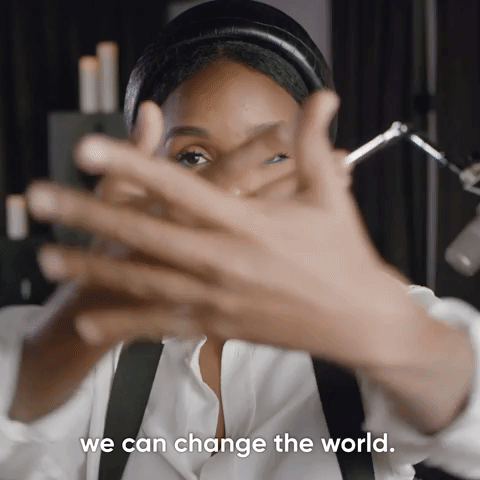
It’s an election year in the United States and that means social media is flooded with political hot takes. And, like most art forms that require a lot of self-reflection, most of us suck at it.
I’ve spent my career in social media with a particular focus on video. That means I’ve been heads-down thinking about what content works on platforms and why. This is especially relevant to brands, whose objectives are often to shift perception: our toothpaste is more punk rock than your toothpaste, our insurance company is funny and accessible, and, my recent favorite, my migraine medicine knows how to make dank memes.

Brands can alter perceptions, so why, despite all of your posts, is your uncle still posting conspiracy theories from disreputable micro-blogs?
If you believe social media platforms have incredible power to influence audiences (I do), you know that content curation is controlled by algorithms (it is), and want to actually change minds through your posts, read on for my top five tips to level up your slacktivism.
Create Original Content

Think like a platform for a moment. What would you want to boost in a feed on your site, understanding that the goal is to create a positive community that hangs out on the site for a long time viewing the highest-value ads possible?
Probably not links to articles that take you off of the site. That’s working against your goals. Text posts are fine if they get great engagement, but there’s a lot of those. Pictures uploaded directly to the site instead of linked from another site? Now we’re talking. VIDEO uploaded directly to the site? Where people watch it and I can serve you VIDEO ads? Now we’re talking!
And that’s why creating the highest-value asset with the most ‘wow factor’ is far more likely to be surfaced to more people, get more shares, and ‘go viral’ on-platform.
The breakout stars of slacktivism in 2020 have generally been video creators. Please note that I’m not trying to be partisan (purely speaking from a viewpoint of content reach), but here’s a recent spot from a group that have become rockstars of social media reach by producing videos to make their point:
And I can’t possibly do a post about activism on social platforms in 2020 without a reference to the breakout comedy star / lip sync specialist Sarah Cooper:
And if you aren’t ready to sharpen your video editing skills, native gifs, memes, pictures, live streams, and even original and engaging text posts are a great way to get your message across. Just remember that brevity is your friend, make content immediately engaging, and follow the rules of shareable content.
Post Like a Human

Let’s say you’re a corporate brand on Twitter. Are you more likely to get more followers and engagement by re-posting your commercials or by speaking to the internet like a witty, charming friend?
The latter, of course.
One of my favorite is Wendy’s. They’ve absolutely exploded on Twitter by posting as a funny comedian that’s always speaking through the lens of a burger-pushing fast food restaurant.

And slacktivists can do it too! Don’t stick to partisan talking points or jargon. If you’re sharing a piece of content, write a quick post explaining why the piece of content resonated with you. Extra points if you can relate it back to a story from your life.
Whether people consciously understand it or not, social media is lacking a lot of humanity and personal anecdotes are one of the most powerful ways to help someone see an issue from another point of view. That’s why truly human stories on platforms like GoFundMe have a much higher chance of virality.
Join Like-Minded Groups

Social media can sometimes feel like you’re shouting into a void. Have you ever written a tweet that ends in a question mark then get no replies? Devastating.
Thankfully, if you’re supporting a cause, there are plenty of online groups in all shades of the political spectrum that can help boost your content. Facebook is an amazing platform for this. You never want to spam a group, but if you create something relevant and resonant, you can always ask a moderator if it’s okay to share. Or you can message trusted friends privately to see if they will share your content (don’t overuse this).
If the true goal of your content is to evangelize a cause, don’t be afraid to give it away. Find a large profile or page that is posting similar content to a like-minded group and offer them the right to post natively. You can even request attribution and grow your own base of followers.
Remember that true viral content needs engagement. A view is nice, a like or favorite is better, a comment is even better, and a share is the absolute best.
Extra tip: if someone is sharing my content I like to send them a quick ‘thank you’.
Don’t Be An Over-Poster

Remember that story of the boy who cried wolf? Here’s a recap: boy cries “Wolf!” when there wasn’t a wolf, then there’s a wolf, boy cries “Wolf!” and everyone ignores him, then the boy gets a bunch of his sheep eaten. The lesson? Alarmism will cause people to ignore you. And, if you’re a sheep, don’t follow a pathological liar.
You may think that reposting every infuriating article and sharing every partisan video is helping your cause, but it’s actually doing three distinct harmful things:
It’s making you look ‘spammy’ to the platform, which means each individual post will achieve less reach.
Friends and followers who are disinterested in your cause are more likely to mute or unfriend you.
Your audience may stop believing you because they view you as a hyper-partisan who will believe or share anything as long as it conforms to your worldview.
Instead, think more tactfully. Who is your audience? What makes them tick? How do you share a piece of content in a way that’s convincing, rather than insulting?
Unless your brand is ‘in-your-face’ insulting, in which case, have at it.
Never Ever, Ever Argue

Uh oh. Someone wrote something offensive under your post. Time to roll up your sleeves and wage a bit of intellectual warfare, right?
Absolutely, positively not.
Again, think like a platform. What does the platform think when someone comments on a piece of content. It thinks, “This sure is an engaging post! Let’s show it to more people!” Even replying to a comment boosts the original reply more than your reply to the reply.
So what do you do if you’re so offended that you’re jumping out of your skin to reply?
Block. If you can’t block? Unfriend. If you can’t unfriend? Mute. If you can’t mute? Ignore.
You don’t owe anyone your attention. If someone is making your social media time less fun (and it is supposed to be fun…remember when it was fun?), consider whether they deserve your attention.
Please note I’m not telling you to block everyone that disagrees with you politically. But you shouldn’t give those posts your attention either. Spend time engaging with content you do like and ignoring content you don’t. And if you are going to engage, debate. As soon as it turns into an argument, don’t continue.
I’ve written about this topic quite a bit.
You’ve Now Been Promoted to ‘Activist’

Social media is at its best when it’s passion-driven. And when you’re able to remain mindful when using social media, it can be an incredibly powerful tool to change hearts and minds. Heck, a lot of major platforms have gotten in a lot of trouble because of that fact! So set up that TikTok account, dust off that old copy of Adobe Premiere, and start winning over the heart and mind of that grumpy dude that sat behind you in 9th grade algebra!
Author Phil Ranta is the Chief Operating Officer at Wormhole Labs in Los Angeles, California. He has built some of the largest creator networks in the world at Facebook, Fullscreen, and Studio71.
If you enjoyed this article, please subscribe, share, or reach out on LinkedIn, Twitter, or Instagram.



